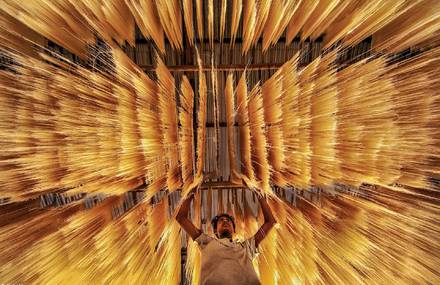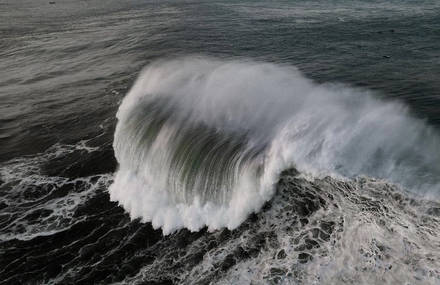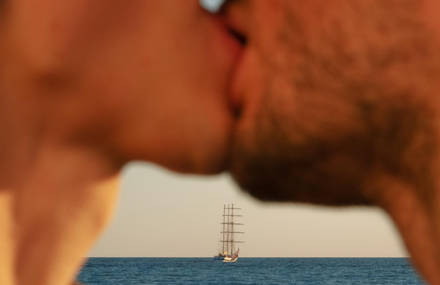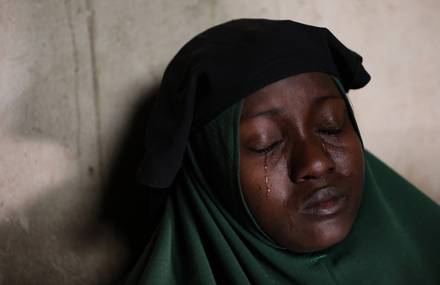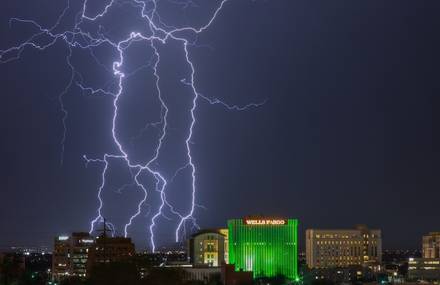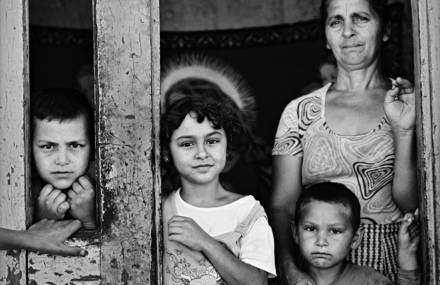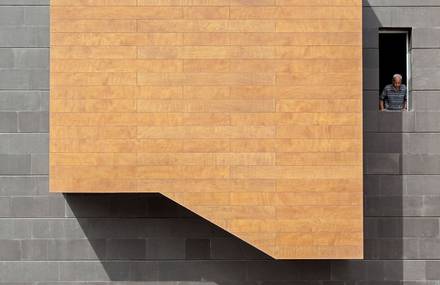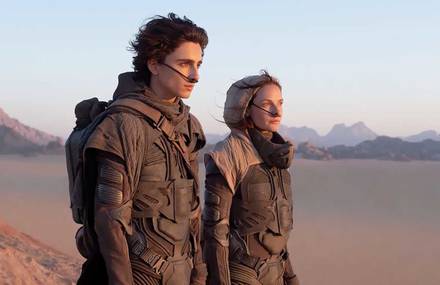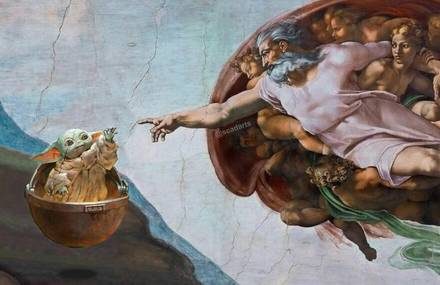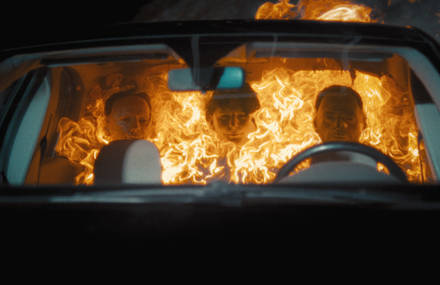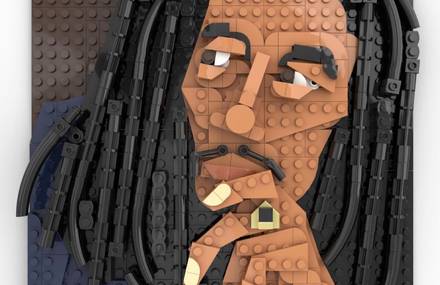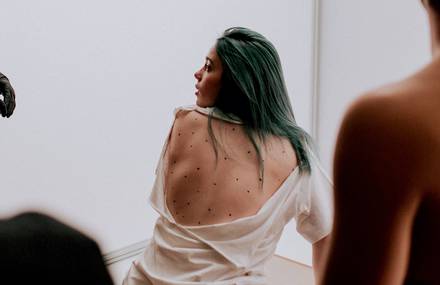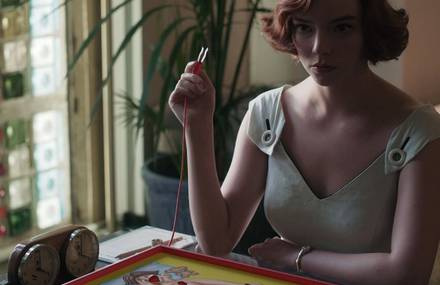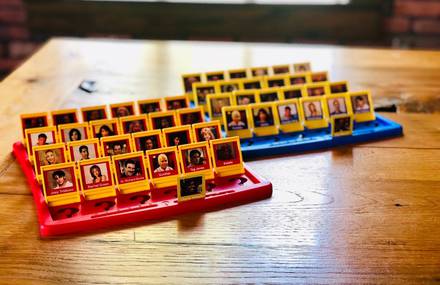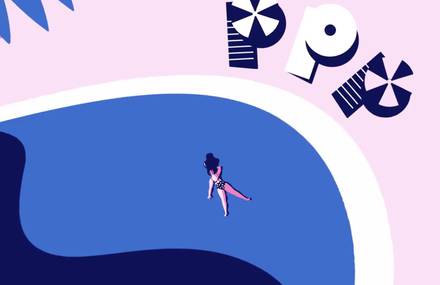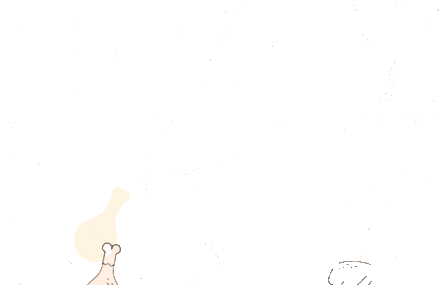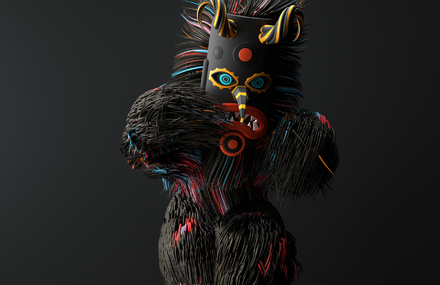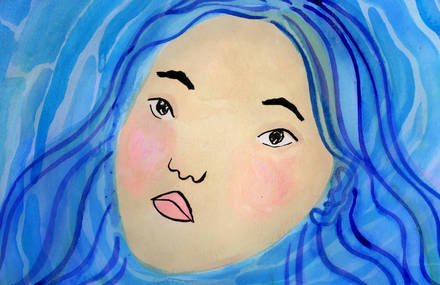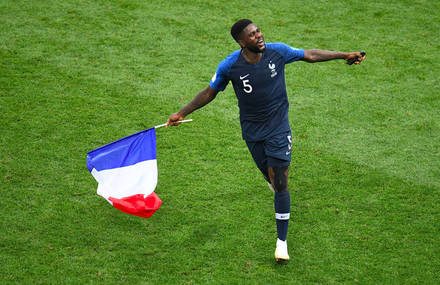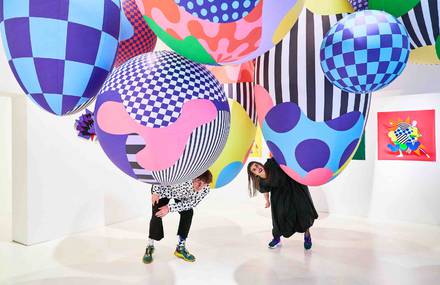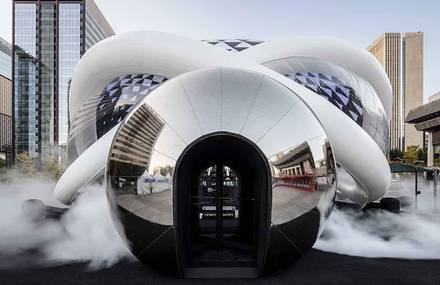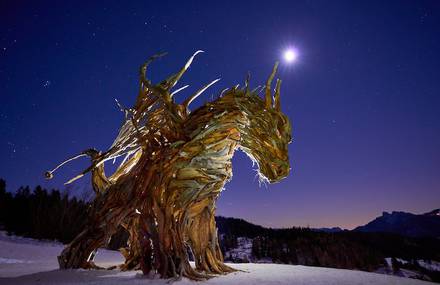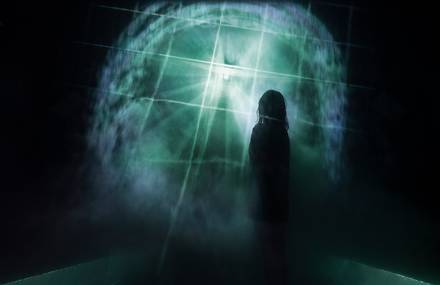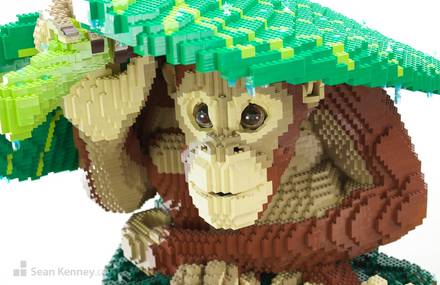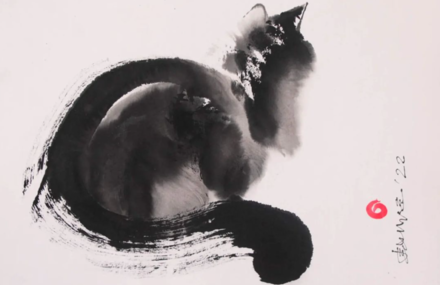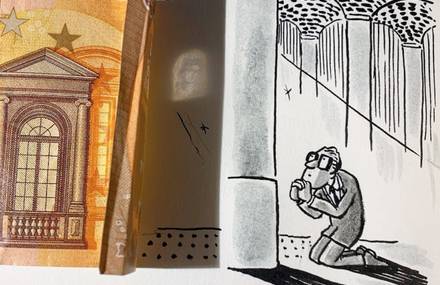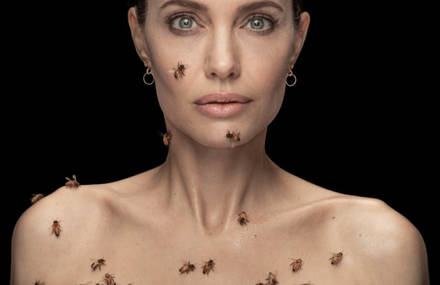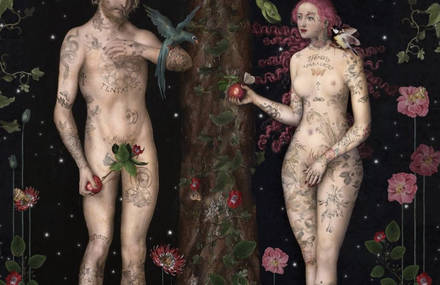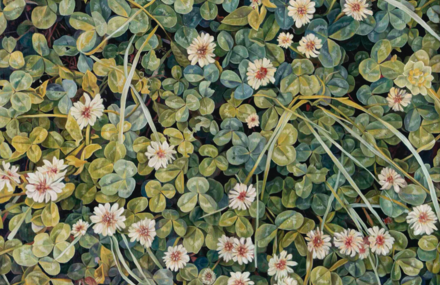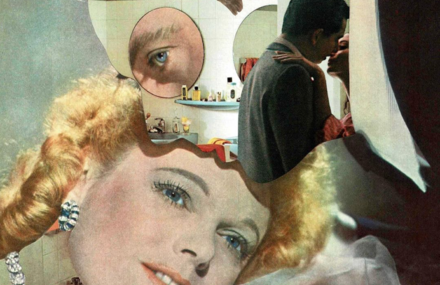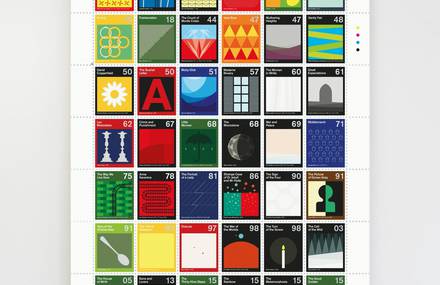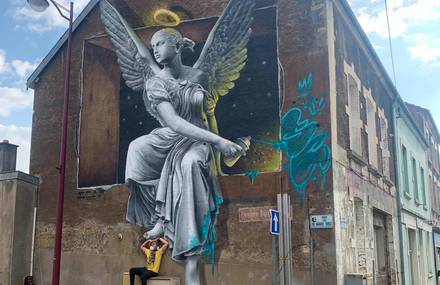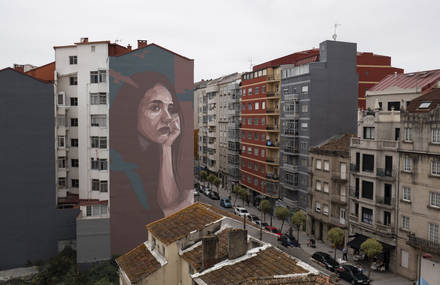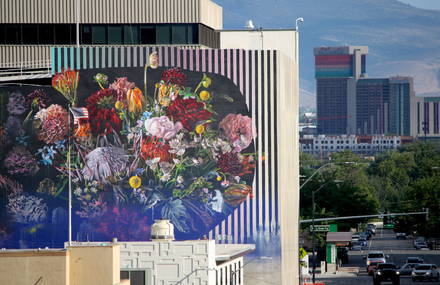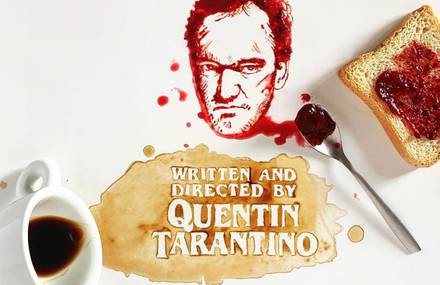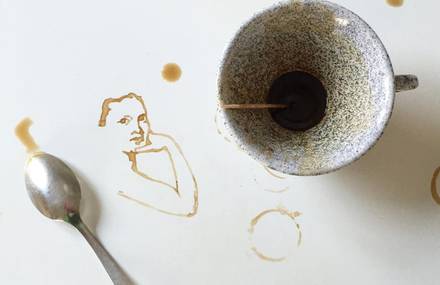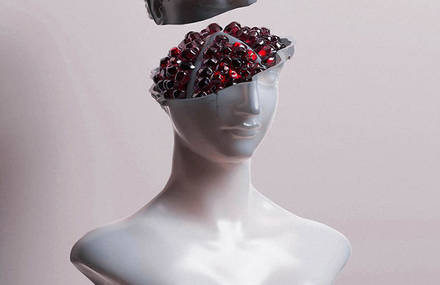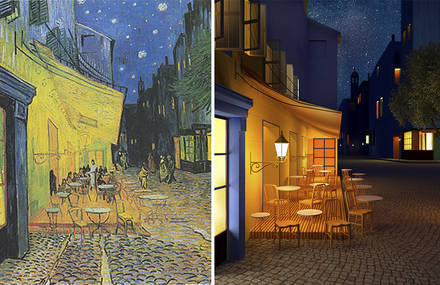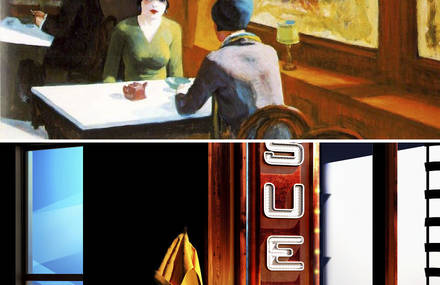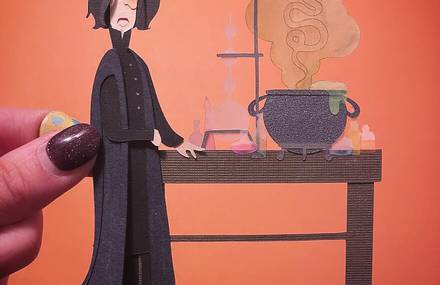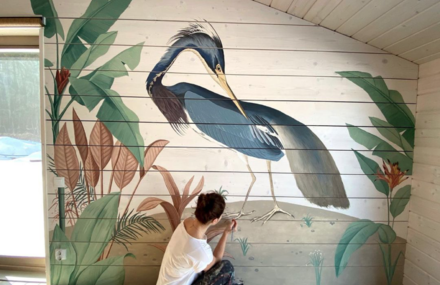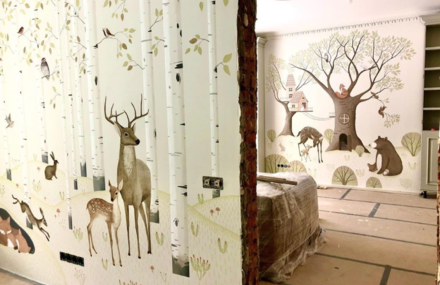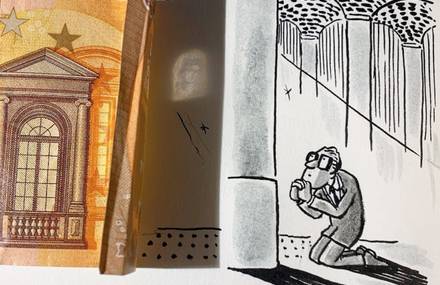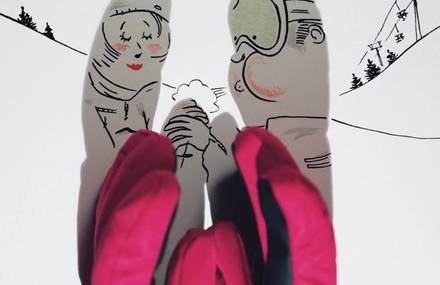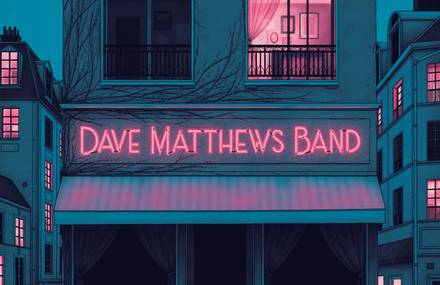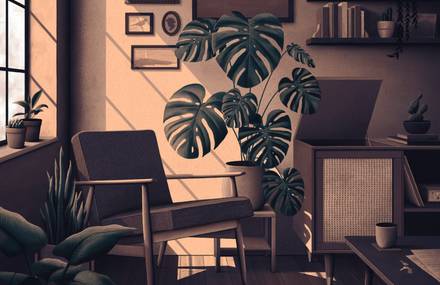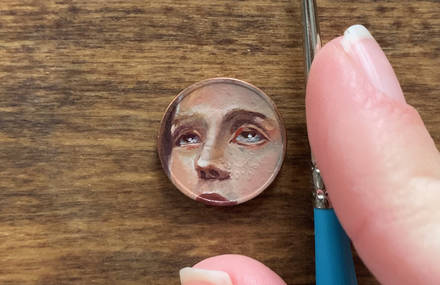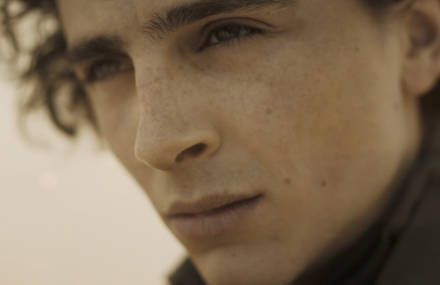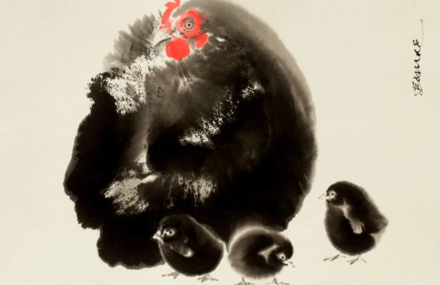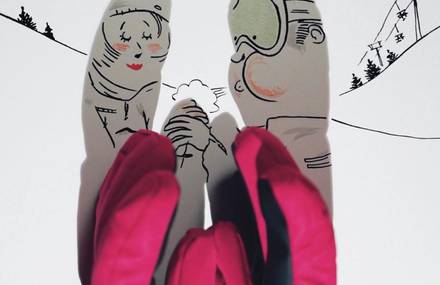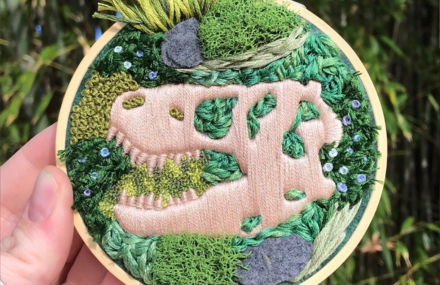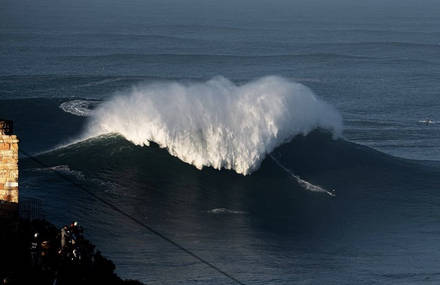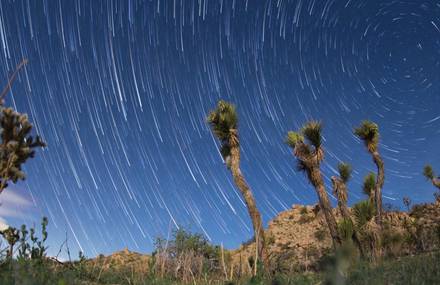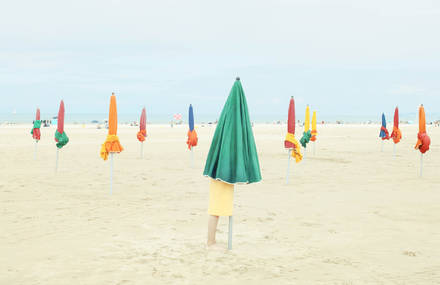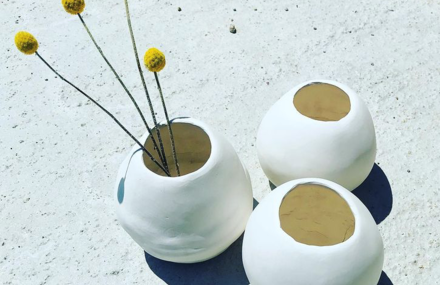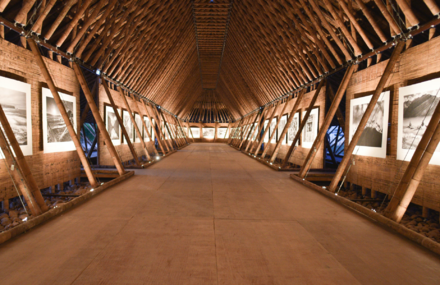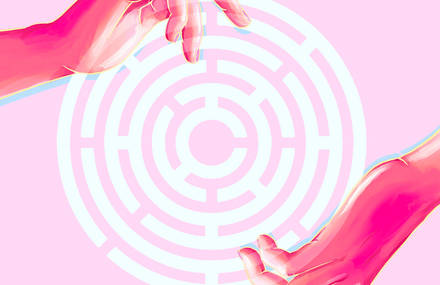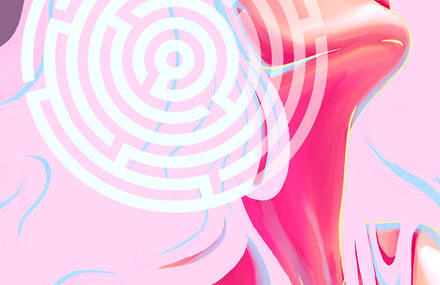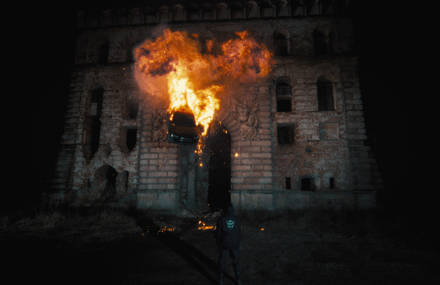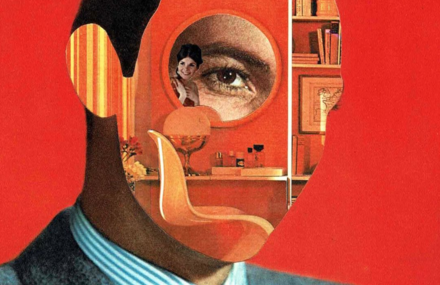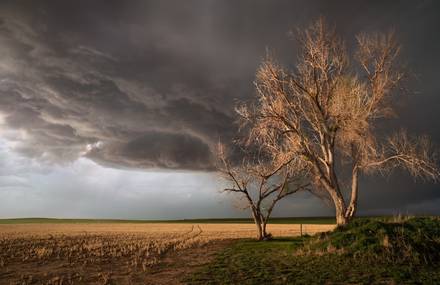Based in Perpignan, the annual photojournalism festival Visa Pour l’Image just released its 26th edition. The city is filled by more than 3000 talented photojournalists and press agencies from all around the world. This year, 26 exhibitions were presented in the city with the most powerful and touching images of what happened during 2014. To discover in the gallery.
Photo by Maxim Dondyuk : Euromaidan: a Culture of Confrontation. The announcement by the President of Ukraine that the Association Agreement between Ukraine and the European Union would not be signed was the starting point of Euromaidan, a completely peaceful protest by pro-EU Ukrainians. But a violent crackdown on protesters, plus provocation, brought massive crowds out, assembling on the main square of the capital, demanding respect for human rights, and calling for an end to the regime and the country’s political elite. Euromaidan became a dramatic spectacle, with battle scenes reminiscent of the worst days of war, with frost and flames turning Maidan Nezalezhnosti – Independence Square – into a phantasmagoria, destroying the familiar features of the once carefree and bold city of Kiev. Here: After the clashes, police and riot police remained on Maidan Nezalezhnosti, on February 19, 2014. Winner of the Ville de Perpignan Rémi Ochlik Award 2014.
Photo by Anne Rearick/Agence VU. South Africa – Chronicles of a Township by Anne Rearick – For the past decade Anne Rearick has photographed life in predominantly black townships outside Cape Town. Her pictures display humanist sensibility and convey the spirit of South Africans who face endemic violence, extreme economic hardship, and unabated racism, yet still maintain dignity, hope and courage. Rearick’s work has taken her into the classrooms of over- crowded schools and the emergency room of an underfunded public hospital, into churches and people’s homes. With South Africa’s current political climate, economic instability and increasing social unrest, the images show what is at stake in this fragile new democracy. Here: Khayelitsha, South Africa, 2004.
Photo by Michael Zumstein/Agence VU for Le Monde/AFP Photo. Central African Republic, December 15, 2013. Men from the Popular Rebel Movement of the Central African Armed Forces [Mouvement de révolte des forces armées centrafricaines pour le peuple], a mainly Christian group, being given military training in a school in a suburb of Bangui.
Photo by Bruno Amsellem/Signatures. Rohingyas, a Silenced Minority by Bruno Amsellem/Signatures – Since June 2012, the Rohingya people of Burma have been victims of violent and sometimes deadly attacks by local communities, as the authorities stand by, virtually condoning the attacks. The Rohingya Muslim minority were rendered stateless in Burma’s 1982 citizenship act, and according to the United Nations they are one of the most persecuted minorities in the world. Over the past two years, prominent Buddhists have been inciting the Burmese people to hate. Entire villages have been burned and razed in Arakan (Rakhine) State in north-west Burma. Hundreds have been left dead in the wake of the violence which has spread to the center of the country. Camps for displaced persons near the city of Sittwe, the capital of Arakan State, now house 140 000 Rohingyas who are denied freedom of movement and healthcare. Bruno Amsellem visited the camps where westerners and humanitarian workers are kept under strict surveillance by the authorities. Here: Since the riots in June 2012, more than 140 000 Rohingyas, the Muslim minority community in Burma, have been living in camps for internally displaced persons in Arakan state. Sittwe, Burma (Myanmar), August 2013.
Photo by livier Laban-Mattei/The Mongolian Project/MYOP. Mongolia – there is no El Dorado by Olivier Laban-Mattei – It is time to put an end to the latter-day myth that Mongolia is the new El Dorado. It certainly is not. Mongolia is not a land blessed by the gods, a rich land offering wealth to any and every fortune hunter as the international media would have us believe. Quite the opposite. Social inequality has been made dramatically worse by intensive mining, with serious effects on human health and the environ- ment. The first victims are, of course, the people of Mongolia. With polluted air, water and land, the prevalence of pollution-related disease and appalling hygiene and health has soared, but the authorities persistently deny this, preferring to promote an idyllic image of their country in a bid to attract ever more foreign investors. Here: Winter in Bayan Khoshuu, a poor district known as the yurt neighborhood, in Ulan Bator. Winter temperatures go down to 40° or 50º C ( 40°/ 60° F) forcing thousands to burn vast quantities of coal for heating, leaving a thick cloud of smoke over the city, and causing serious diseases from air pollution. In winter Ulan Bator is one of the most polluted cities in the world.
Photo by Mary F. Calvert/Zuma Press. Mary F. Calvert/Zuma Press – Canon Female Photojournalist Award 2013 presented by the AFJ. The Battle Within: Sexual Assault in America’s Military – Women who join the US Armed Forces are being raped and sexually assaulted by their colleagues in record numbers. An estimated 26,000 rapes and sexual assaults took place in the armed forces last year; only one in seven victims reported their attacks, and just one in ten of those cases went to trial. Many victims fear retaliation, demotion or being kicked out of the military, because they have seen it happen to others. The abuse is often considered simply a breach of conduct and not a criminal offense. The effects of Military Sexual Trauma, include depression, substance abuse, paranoia and feelings of isolation. Victims spend years drowning in shame and fear as the psychological damage silently eats away at their lives: many frequently end up addicted to drugs and alcohol, homeless or take their own lives. Here: Sergeant Jennifer Norris was 21 when she joined the US Air Force, and was drugged and raped by her recruiter at Lackland Air Force Base in San Antonio, Texas. Nancy Parrish, President of the association “Protect Our Defenders”, is seen comforting her after she testified at the hearing of the US House Committee on Armed Services on Capitol Hill.
Photo by William Daniels/Panos Pictures. Humanitarian Crisis in the Central African Republic – The Central African Republic has been plunged into an unprecedented humanitarian crisis. After a year of terror led by the mainly Muslim rebel Seleka group, anti-Balaka militia wreaked revenge on the Muslims in the west of the country who fled or were killed. Entire districts were tar- geted; even women and children were victims of grenade attacks. There was little response from the international community; soldiers with the African-led International Support Mission in the CAR (MISCA) and French troops struggled to stop the massacres and ethnic cleansing. Nearly one million (one fourth of the population) fled, be- coming displaced persons, needing food and medical care in conditions with no proper security. Here: A grieving relative of Sept-Abel Sangomalet, a 20-year-old Christian killed by Muslims who entered the family home and stabbed him in his sleep. Winner of the Humanitarian Visa d’or award – International Committee of the Red Cross (ICRC) 2014.
Photo by Pierre Terdjman/Paris Match. Central African Republic by Pierre Terdjman – The Seleka militia took over in March 2013, and perpetrated massive violations of human rights – massacres, rape, torture and executions, and burning villages to the ground. Nearly one fifth of the population has had to flee and they are now living in appalling conditions in the bush and IDP camps. In September, the predominantly Christian anti- Balaka militia embarked on a wave of reprisals against the Muslims with massacres, summary executions and looting; the sides had changed, but the violence continued. Terrified Muslims fled north-west, to towns such as Bossangoa and Bouca which are traditionally Muslim. Of the 100 000 Muslims that lived in Bangui, only one thousand are left; the others have fled across the border. Today it seems unlikely that any change will occur. The rift may very well be permanent. Here: A wounded man in the community hospital.
Photo by William Daniels/Panos Pictures/National Geographic Magazine. Train for the Forgotten by William Daniels – It was the most expensive infrastructure project of the Soviet era. The BAM, the Baikal-Amur Mainline, is the railway crossing Eastern Russia, running for more than 4000 kilometers, passing through remote villages with no amenities, and certainly no healthcare facilities, and where it can take a day or more to reach the nearest hospital. So the authorities set up a medical train – the Matvey Mudrov – stopping at almost every village along the line. For the people, it is more than just a mobile hospital; it is their sole point of contact with the rest of Russia, with Western Russia which has surged ahead over the past decade, leaving the East behind. Here: A stopover in the deserted town of Elban, where the Matvey Mudrov crew are celebrating Maslenitsa, marking the end of winter, drinking vodka, eating kebabs and burning a doll.
Photo by Adrian Fussell. Ian Parry was a photojournalist working for The Sunday Times and covering the Romanian Revolution in 1989 when the aircraft he was traveling in to leave Bucharest was hit by a missile, killing all on board. Ian was just 24 years old. A scholarship was set up to support young photojournalists wanting to follow Ian’s dream. Many of the recipients have gone on to become some of the finest news photographers today. The exhibition presents work by the scholarship patron, Don McCullin CBE, and the winners. Here: March 30, 2012, the day before the National Championships of the Junior Reserve Officers’ Training Corps in Louisville, Kentucky. Cadet William Wiedenbaum, commander of the Patriot Guard, shooting a toy gun at his hotel roommates. From the series “My Name is Victory”, Ian Parry Scholarship Winner 2012.
Photo by Yunghi Kim/Contact Press Images. The Long Road Home in Africa: Famine to Reconciliation 1992-1996 by Yunghi Kim – Working up close and finding intimate and emotional glimmers of humanity in the darkest and bleakest of moments are hallmarks of Yunghi Kim’s work. These four years of intense work in Africa were seminal chapters in Yunghi’s life. As Boston Globe staff photographer, she was taken hostage in Somalia and, only days after being released, found the courage to return there to complete her assignment. She was exposed to the worst and best of mankind, and was always able to see the beauty of Africa and the people of Africa. Revisiting the work twenty years later has proven to be a humbling experience. Here: Baidoa, Somalia, 1992. The shadow cast by US Marines entering the town of Baidoa, hit by famine and held by bandits.
Photo by Sebastián Liste/NOOR for Time Magazine and Fotopres “La Caixa” Grant. On the Inside: Venezuelan Prisons Under Inmate Control – Vista Hermosa is a notorious prison in Venezuela. With violence plaguing the country, there are more and more prisoners, and more clashes between prisoners and guards. The authorities have made no attempt to improve conditions, and have let the situation degenerate into near chaos. National Guards patrol outside the walls, while the inmates live and die in a world of their own making on the inside. Exhibition co-produced with the Photographic Social Vision Foundation. Here: Vista Hermosa prison, Ciudad Bolivar, Venezuela, March 2013. A celebration inside the prison while family members are visiting. Wilmito and his gang took control of the prison by force, and the inmates are now allowed two family visits a week. In September 2008, family overnights were instituted as part of a prison humanization plan.
Photo by Anja Niedringhaus/Associated Press. Anja Niedringhaus/Associated Press – Tribute. Anja Niedringhaus was one of the most talented, bravest and accomplished photojournalists of her generation. Her senseless death at the hands of Afghan police officer on April 4, 2014 deprived the world of an extraordinary person. Her storytelling skill with a camera was extraordinarily effective, a reflection of her own open gaze and genuine compassion for her subjects. Her enthusiasm and good cheer were infectious, even in the darkest of circumstances. She consistently volunteered for the hardest assign- ments and was remarkably resilient in carrying them out time after time. She truly believed in the need to bear witness. Here: A Libyan rebel urging people to leave as shells fired by Gadhafi’s forces landed on the front outside Bin Jawaad, 150 km east of Sirte. Central Libya, March 29, 2011.
Photo by Klaus Nigge/National Geographic Creative for National Geographic Magazine. The Bald Eagle, as the national symbol of the United States of America, is grand and majestic, but is also a bird living in a world of rain and dirt, of skies bright and dark, hunting and fighting – a true eagle. Klaus Nigge traveled to the Aleutian Islands where there is a large population of bald eagles. There it is either raining, or just lousy weather. At Dutch Harbor on Unalaska Island, the largest fishing port in the States, the eagles are not shy, being used to human contact, offering original opportunities to the photographer. Here: Bald eagle (Haliaeetus leucocephalus), in the rain. Unalaska, Aleutian Islands, Alaska, January 2007.
Photo by Christophe Simon/AFP Photo. Christophe Simon, AFP chief photographer in Brazil, gathered together a group of 18 teen- agers in Cidade de Deus favela in Rio de Janeiro, and, working together, they photographed their everyday life featuring their love of football, and at a time before every camera in the world was focused on Brazil and the 2014 Football World Cup. While covering “pacification” in the favelas, Christophe had realized just how fascinated the teenagers in these neighborhoods were by the job of photoreporter. Here: Children playing football in Cidade de Deus favela on April, 2013.
Photo by Sean Sutton/MAG/Panos Pictures. The Eye of the Storm by Sean Sutton – Typhoon Haiyan hit the Philippines on 8 November 2013 killing more than 6,000 people. Haiyan, known locally as Yolanda, had sustained winds of 315kph, making it the strongest typhoon ever to reach landfall. Much of the city of Tacloban on Leyte Island was directly in the path of the storm and was completely devas- tated by the intense winds and a storm surge between five and eight meters high. Many thousands lost their homes and were displaced. What was left was an apocalyptic landscape, testament to the awesome power of nature. Here: Village de Mahagnau, Leyte, Philippines, 20 novembre 2013. Local people helping unload a helicopter, the first aid to reach the remote community after Typhoon Haiyan.
Photo by Gaël Turine/Agence VU. India and Bangladesh – The Wall and Fear by Gaël Turine – In 1993, India began building a dividing wall over a distance of 3 200 kilometers [approximately 2000 miles], separating it from neighboring Bangladesh. Officially it was to protect the country from Islamist terrorists and illegal migrants. Here people are arrested, tortured and killed, making this the most dangerous border in the world. Nearly all victims are Bangladeshi citizens trying to cross illegally to the other side, and for any number of reasons – economic, family, health or environmental – as their country suffers from every possible affliction. Here: Hili, West Bengal, India, on the border with Bangladesh. Between rounds by the Border Security Force, two Bangladeshi women cross the wall between the countries. They enter the country empty-handed and leave laden down with smuggled goods. Indian BSF troops accuse the Bangladeshi border guards of letting them through, thus forcing the BSF troops to take more violent action.
Photo by Chu Chi Thành. The Photographers in the North. Forty years ago, the Vietnam War came to an end. It had been a war with massive media coverage, with memorable photos by names such as Larry Burrows, Don McCullin, Philip Jones Griffiths, Gilles Caron, Horst Faas and Henri Huet, the photojournalists covering the war from the American side, the “photographers in the South”. Very little is known about the work of the men covering the war on the other side where B52 bombers were flying overhead, the Vietnamese soldiers who became photographers – the “photographers in the North”. Photographers Doan Càng Tinh, Chu Chi Thành and Hua Kiem are making the journey to Perpignan this year with the help of Patrick Chauvel. The exhibition has been organized with the support of Marie-Christine Blandin, President of the Culture Committee of the French Senate, and Patrick Bloche, President of the Committee on Cultural Affairs of the French National Assembly. Event organized as part of the France-Vietnam Year, Nam Viet Nam Phap, 2013-2014. Here: November 16, 1967. The ageing militiaman, Tran Van Ong, from Duc Ninh (Quang Ninh district, Quang Binh province), after bringing down an F4H Phantom Fighter.
Photo by Alvaro Ybarra Zavala/Reportage by Getty Images. “Stories of a Wounded Land” documents one of today’s most complex issues affecting the majority of people around the world and the planet itself: agribusiness. Agribusiness is global in scale, extending, for example, from a local producer in Latin America or an African tribe to large corporations and consumers in the First World. Is agribusiness the solution to world hunger, or is it poisoning both the land and the people? Over the past two years, Alvaro Ybarra Zavala has been documenting agribusiness in practice in Latin America, in particular in Argentina and Brazil, two of the world’s major breadbaskets. Here: Avia Terai, Chaco, Argentina, November 2012. Milagros Alcaraz (6) has spina bifida and has been given no medical care. She can barely walk. The local community is affected by crop dusting using equipment that does not comply with legal requirements, and which is done with the consent of the authorities and total impunity.
Photo by Pierre Terdjman/Paris Match. Christians looting a Muslim shop in the “Combattants” district of Bangui.
Photo by Noel Celis/Agence France-Presse. Typhoon in the Philippines: AFP, leading in the wake of Haiyan. On November 8, 2013, eyes around the world were focused on the Philippines after typhoon Haiyan struck. Within a few minutes, whole districts had been flattened, demolished by the extraordinary force of the typhoon with winds gusting over 315 km/h (c. 200 mph). The toll was more than 8000 dead and missing. The AFP reporters who reached the site the next day discovered an apocalyptic landscape. Their photos vividly convey the extent of the disaster and the distress of the survivors. Here: A survivor in the midst of the debris after Super Typhoon Haiyan. Tacloban, island of Leyte, eastern Philippines, November 11, 2013.
Photo by Michael Zumstein/Agence VU. In March 2013, the Muslim-dominated Seleka rebel movement seized power in Bangui, bringing the corrupt regime of François Bozizé to an end. But a reign of terror ensued, for weeks, as soldiers backing the new president, Michel Djotodia, led a wave of violence and looting targeting Christian communities. Michael Zumstein has made a number of trips to the Central African Republic, the first in September 2013 when he saw violent attacks on Christian civilians. And he was there when Christian self-defense anti-Balaka militia gained control and Muslims were forced to flee. His photographs stand as a record of the unprecedented violence that continues unabated. Here: Central African Republic, Njoh, 24 September 2013. Men who claim to be members of the Anti-Balaka movement, which fights the former-Seleka, are posing with guns in the main street of Njoh.
Photo by Guillaume Herbaut/Institute. Ukraine, from Independence Square to the Donbas by Guillaume Herbaut/Institute – It all started with a few tweets calling protestors to demonstrate on Independence Square. Students were angry that President Yanukovych had refused to sign an EU association agreement, opting instead for the Eurasian union proposed by Vladimir Putin. Then the corrupt president fled the country and it turned into revolution. Next Russia annexed Crimea, and since then Ukraine has been falling apart. So what is happening? Is this the emergence of a new nation? Is this a latter day manifestation of the Soviet era, or is it a revival of Russian imperialism on the global stage? The crisis in Ukraine may very well be the beginning of an international crisis. Here: Kiev, Khreshchatyk Avenue, December 9, 2013, 9.29 am. Two Cossacks on a barricade manned by pro-EU activists near Independence Square.
Photo by Chris Hondros/Getty Images. On April 20, 2011, Chris Hondros was killed in Libya, at the same time as Tim Hetherington. Chris was one of the photographers whose work was regularly shown in Perpignan, but he had never had an exhibition; we were always so sure that he would produce something even better the next year. Now, three years after his death, his friends and colleagues have pub- lished a collection of his best shots: Testament. Chris worked as a photographer in the most challen- ging and dangerous parts of the world, presenting the plight of individuals and communities caught in the turmoil of conflict, often in remote areas and sometimes for obscure causes, showing the rest of the world how they lived, endeavoring to raise awareness, to make people think and seek to understand. Here: Ali Salem el-Faizani (10) at a street corner while working as a traffic officer. With schools across eastern Libya closed for nearly two months because of the ongoing civil conflict, some children such as Al, chose to work to pass the time. Benghazi, Libya, April 15, 2011.
Photo by Chris Hondros/Getty Images. A soldier loyal to the government shouting a battle cry after firing a rocket-propelled grenade at rebel forces at a key frontline bridge. Clashes continued in Monrovia, despite a call for a cease-fire by the leaders of the LURD rebel group. Monrovia, Liberia, July 23, 2003.
Photo by Jorge Silva/Reuters. The Skyscraper Slum by Jorge Silva/Reuters – A 45-story skyscraper in the center of Caracas boasts glorious views of the Avila mountains, plus large balconies for weekend barbecues. Yet it is no five-star hotel or swanky apartment block: it is a slum, probably the tallest in the world. Dubbed “The Tower of David”, it was intended to be a shining new financial center, but was abandoned – for financial reasons. Squatters seized the huge concrete skeleton, and now some 3000 people call the tower their home. Here: Genesis (9) on the balcony of the apartment where she lives with her parents and four siblings.
